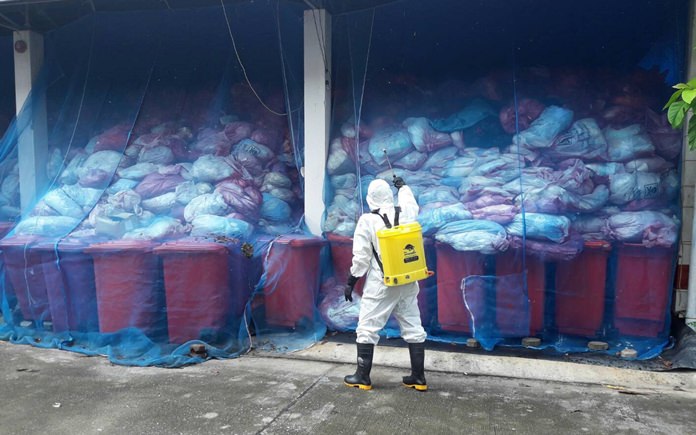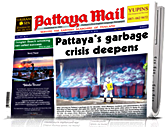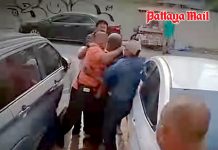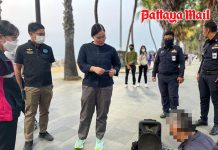
Hazmat banned from Khao Maikaew, Chonburi declares transfer sites illegal
Pattaya and Khao Maikaew officials have agreed on a virtual ban on medical waste disposal, barring the resort city from dumping more than a ton of it in the Banglamung sub-district.
 An angry Khao Maikaew Mayor Jamnien Kitipakul initially barred Pattaya from dumping even a single syringe or bandage from Pattaya hospitals and clinics in the bedroom community but hedged slightly Jan. 30, allowing a single ton of medical waste to be left there temporarily.
An angry Khao Maikaew Mayor Jamnien Kitipakul initially barred Pattaya from dumping even a single syringe or bandage from Pattaya hospitals and clinics in the bedroom community but hedged slightly Jan. 30, allowing a single ton of medical waste to be left there temporarily.
About a ton of hazardous waste a day will instead be sent to transfer facilities on Sukhumvit Soi 3 in East Pattaya and in Jomtien Beach on Soi Chaiyapruek.
After serving as Pattaya’s garbage bin for decades, Khao Maikaew residents and administrators declared that they’ve had enough and want the rapidly growing city to find some other place to dump its soaring amounts of trash.
Pattaya owns 140 rai of land in Khao Maikaew that, for years, served as its primary dump and landfill. But when the city started bringing in extra-putrid trash from Koh Larn in 2012, neighbors sick of the smell and pollution put their collective foot down. After months of protests and gate blockades, Pattaya threw in the towel in 2013 and agreed to find another landfill.
However, officials from both cities reached a quiet agreement that allowed Pattaya to continue using its land as a garbage-transfer site, as long as it kept total accumulation under specified caps.
Pattaya broke its promise.
After Pattaya’s contract with its main trash hauler expired last year, the city began having trouble hauling away garbage from transfer sites while looking for a new hauler. Garbage piled up not only in Khao Maikaew, but also in Naklua’s Rongmaikeed Community, which currently has an 800-ton backlog.

Pattaya environmental chief Sutee Thapnonghee said the backlogs in Naklua and at the city’s other two garbage-transfer sites are one reason the medical refuse piled up in Khao Maikaew. The city simply had no other place to put the hazardous waste, the quantity of which is exploding due to Pattaya’s growth.
After protests by neighbors, Pattaya agreed to remove the 120 tons of waste and ship it to Nakhon Sawan within three weeks.
Meanwhile, the Public Health Ministry opened an investigation into the Khao Maikaew medical waste dump and whether it created health and environmental problems there.
Khao Maikaew Clerk Pichaya Jancharoen said she wanted the ministry to bring charges against Pattaya’s trash hauler, saying it broke the law by improperly storing medical waste on open ground instead of in a temperature-controlled building. The operator’s holding facility could handle only five tons of hazardous materials, so 115 tons were left on open ground.
Residents said they feared water running out of the dump would spread disease into their water supply.
If that wasn’t enough, Chonburi Province dealt Pattaya another setback in its battle against garbage during a Jan. 29 meeting with sub-district officials from Khao Maikaew, Pong, Nong Plalai and Takhiantia. Environment Department representatives said a recently enacted law makes it illegal to use transfer facilities to hold and then relocate solid waste.
Pattaya and Banglamung District were ordered to submit a letter explaining their current strategy, which is to leave garbage in three different transfer facilities before moving it to a landfill in Laem Chabang or the hazmat disposal site in Nakhon Sawan.





